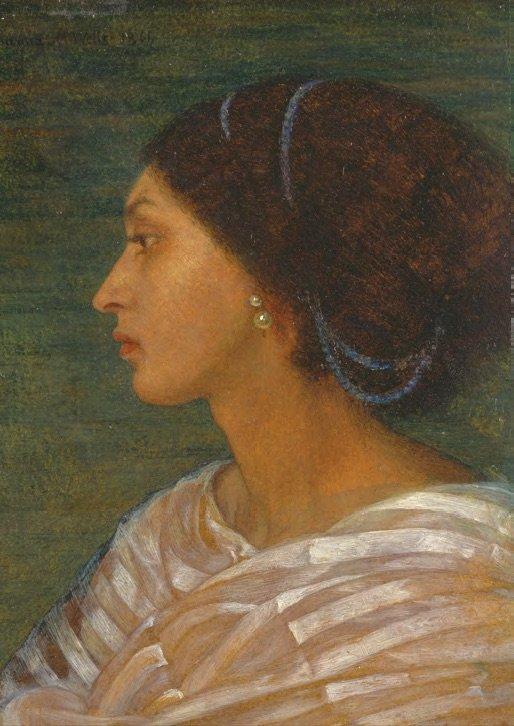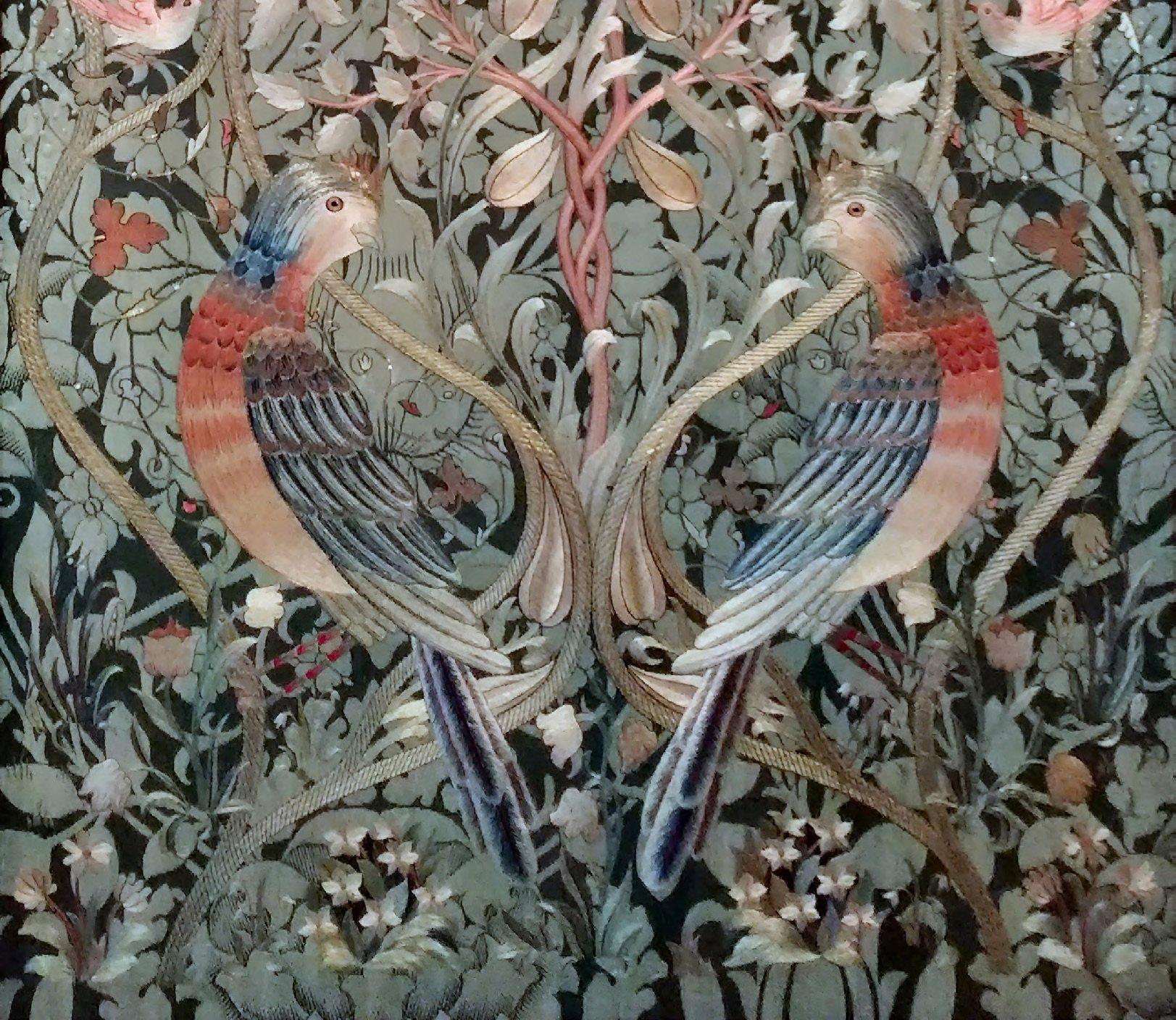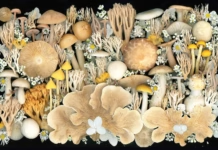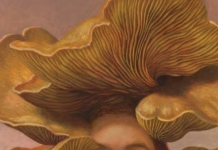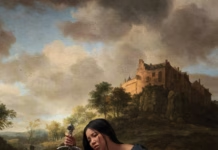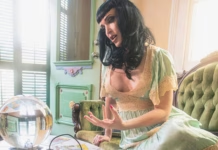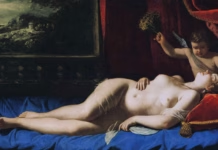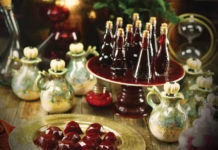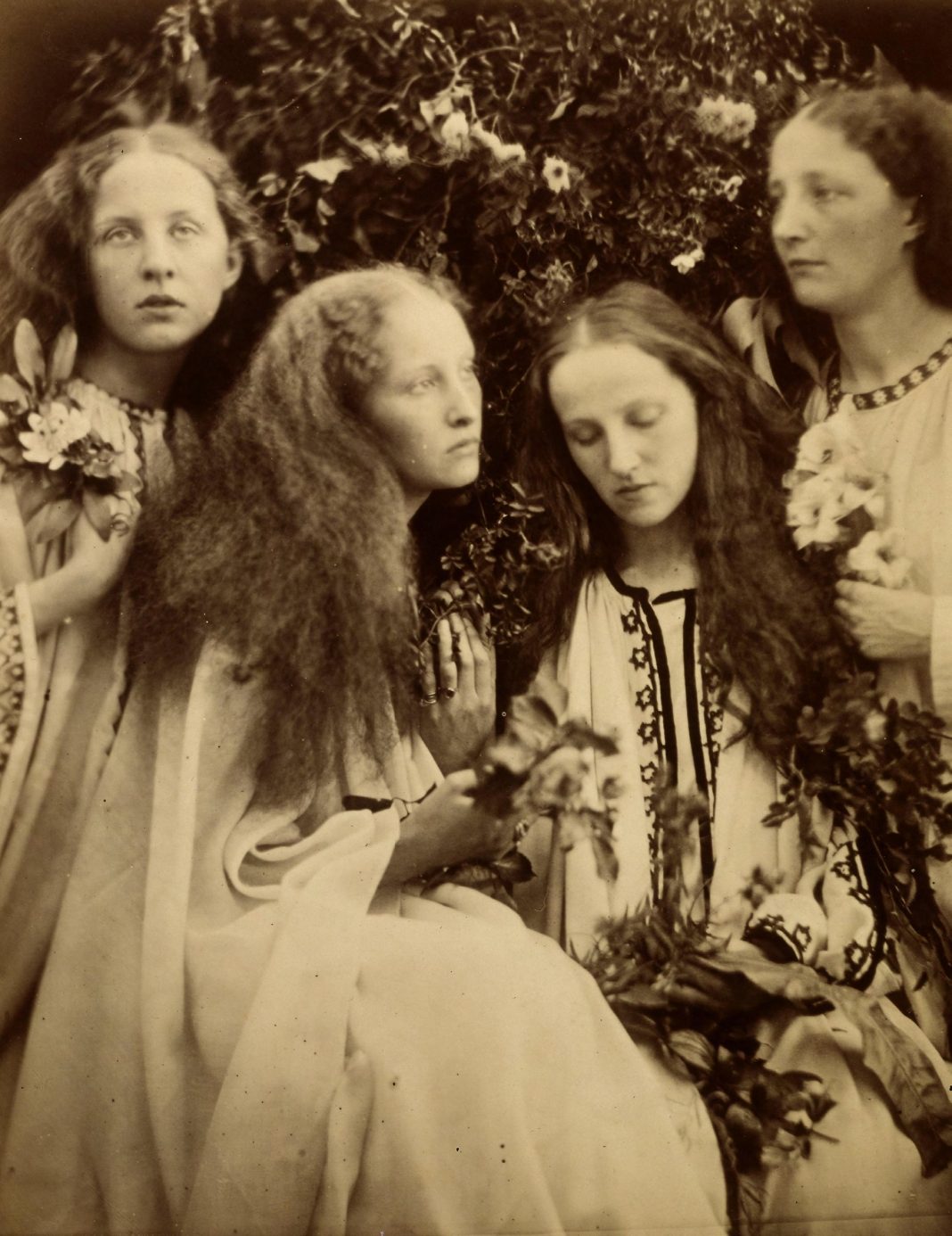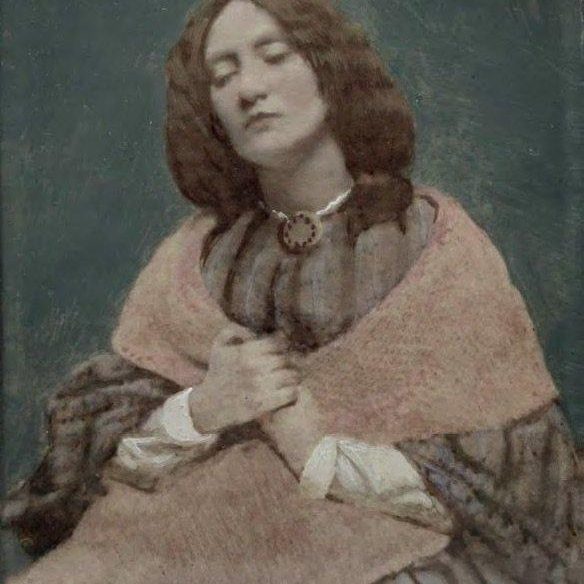
The word Pre-Raphaelite almost always conjures up a certain kind of woman. She has a cascade of copper hair, a face filled with mournful longing, and a deep jewel-colored gown. She has found herself locked in a tower, married to the wrong man, or possibly she has just died of love, because these things just happen. Though the models of Pre-Raphaelitism were almost entirely women, up until recently we assumed that the artists were always men: The hand that held the brush was invariably some chap called Rossetti, or Millais, or Holman Hunt. In recent years, however, the world has rediscovered the Pre-Raphaelite movement’s bevy of equally talented female artists, who span from its inception until our current day. It’s about time we gave them our love.
The Pre-Raphaelite Brotherhood, formed in 1848, was a very male establishment, as the name would suggest. John Everett Millais, a child prodigy, joined forces with his friends William Holman Hunt and Dante Gabriel Rossetti, agreeing that painting had to change from the “sloshy,” unrealistic mess it had got itself into. With them were Thomas Woolner, a sculptor; Frederick Stephens, an uncertain painter who gave it all up to write; William Michael Rossetti, the far more sensible brother of Dante Gabriel; and James Collinson, a painter whom no one now remembers. Working at the same time on her influential poetry was the Rossettis’ sister, Christina, but the first Pre-Raphaelite painter to wear a dress was Elizabeth Siddal. Like Christina, Siddal was pulled into the Pre-Raphaelite crowd via modeling. Christina posed for her brother’s images of the Virgin Mary; Siddal posed most famously for Millais’s Ophelia and then for Rossetti’s obsessive portraits until her death in 1862. Between sittings, Siddal managed to convince Rossetti to help her develop her painting style, and her contemporaries likely knew her equally for her art as for her face. Her watercolors were exhibited alongside the works by the men. She even won the patronage of John Ruskin, the art critic whose writings had inspired the Pre-Raphaelite movement. However, she was from very humble origins, and her reliance on her artwork to survive contributed to her early death from laudanum.

At that point, almost all the women who were artists were the daughters of rich men who could afford to have them tutored with almost no expectation that they would do anything so vulgar as to actually have a career. In the 1850s and ’60s, even wealthy female artists probably had a brush with modeling on their way to getting the teaching they needed to follow their dreams. Marie Spartali Stillman’s beautiful face appeared in Rossetti’s art in the 1870s while she was learning her craft from respected artist Ford Madox Brown. Scandalous poet Algernon Swinburne declared her so beautiful he wanted to “sit down and cry,” and the male Pre-Raphaelite artists vied to have her as a model, with Rossetti urging his friend Brown to “box her up” and not let any other painters steal her. But Spartali Stillman refused all their protestations of love and went on to have one of the most successful careers of any of the Pre-Raphaelite women, creating more than a hundred paintings and exhibiting on both sides of the Atlantic.
Part of the problem for Pre-Raphaelite women is that some of the ordinary, if unfortunate, incidents that befell them have taken on a very significant slant. When artist Walter Deverell turned up his toes at the tender age of twenty-seven, his death from Bright’s disease was seen as tragic but not indicative of anything deeper. But were he a woman, all sorts of meaning would have been drawn from it. Siddal’s overdose might have been only a mistake with prescription medication, but an entire legend has since been built on the fragility of her mental health, the cruelty of her lover, and the despair of her final hours. Likewise, Joanna Boyce Wells, whose artistic career was cut short by her death at thirty from complications during childbirth. This has since been viewed as proof that women tread a more fragile and uncertain path than their equally disease-stricken male counterparts.
Not only that, but if you had the misfortune of being related to a male Pre-Raphaelite, your career would always be compared, unfavorably, to your allegedly far more talented relative. Emma Sandys had the indignity to have some of her wonderful paintings ascribed to her brother Frederick. Rosa Brett, sister of artist John, also saw some of her paintings sold under her brother’s name. No matter how hard she worked, May Morris remained in the shadow of her father, the designer William Morris; her wonderful designs, embroidery, and writing are only now beginning to be recognized.
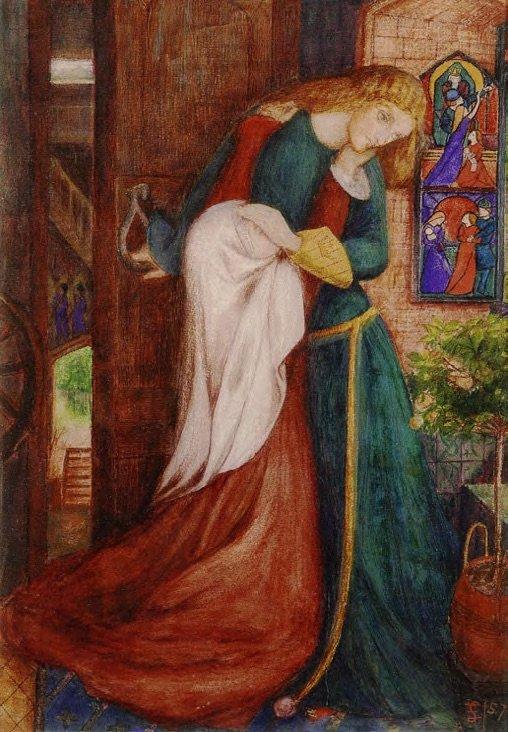
One of the few early Pre-Raphaelite artists who managed to have a career free of male influence was photographer Julia Margaret Cameron, and that may have been due mainly to the novelty of her medium. When in her late forties, she was given a large, glass-plate camera as a present to keep her amused. This was arguably the perfect moment, since her children were grown, her husband was away on business, and the family was financially stable enough for her to learn her craft and create Pre-Raphaelite photographs.
Luckily a change in culture came, enabling young women to pursue a career in art, or at least have the support of their families to receive formal, communal training at one of the newer art schools that welcomed women. The burgeoning bourgeoisie needed something to do with their talented, motivated daughters until they could get them married off,
so women like Eleanor Fortescue Brickdale and Kate Bunce attended schools—Brickdale at the Royal Academy, and Bunce in her native Birmingham. The majority of these young artists probably felt the pressure to give up their career once a ring had been slipped on their finger. Meave O’Byrne Doggett, who attended Dublin School of Art and immersed her Pre-Raphaelitism in the Celtic Revival, gave up art after her husband returned from World War I, retraining as a physiotherapist, possibly inspired by the damage done to her generation of young men. Elfreda Gertrude Beaumont and her sister Marion both trained and worked as artists, but when Marion married in 1924, her career faltered and vanished. Elfreda’s flourished, perhaps because, like Fortescue Brickdale and Bunce, she remained single, and her life and her career, not to mention her earnings, were all her own business. A compromise could be found in the career of Noel Laura Nesbit, who continued making her fairy-tale art into the second half of the 20th century. She married fellow artist Harry Bush and shared studio space and fame with him, if not subject matter.(Bush preferred south London suburban rooftops to enchanted gardens.)
When the history of Pre-Raphaelitism is so jam-packed with women, why then do we think of the movement purely in terms of men painting women? Possibly the problem lies not in the art and artists but in how Pre-Raphaelitism fared during the 20th century. In the late 19th century there was a cultural clique called the Souls: wealthy aristocrats who shared a love of art and culture and who especially adored Pre-Raphaelitism. One of them, Violet Manners, the Duchess of Rutland, was an exquisite artist in her own right, producing portraits of her friends, family, and acquaintances. The children of the Souls formed their own cultural group called the Coterie, who would have carried the love of artists like Edward Burne-Jones through to the 20th century if World War I hadn’t intervened, killing many of the young men of the group.
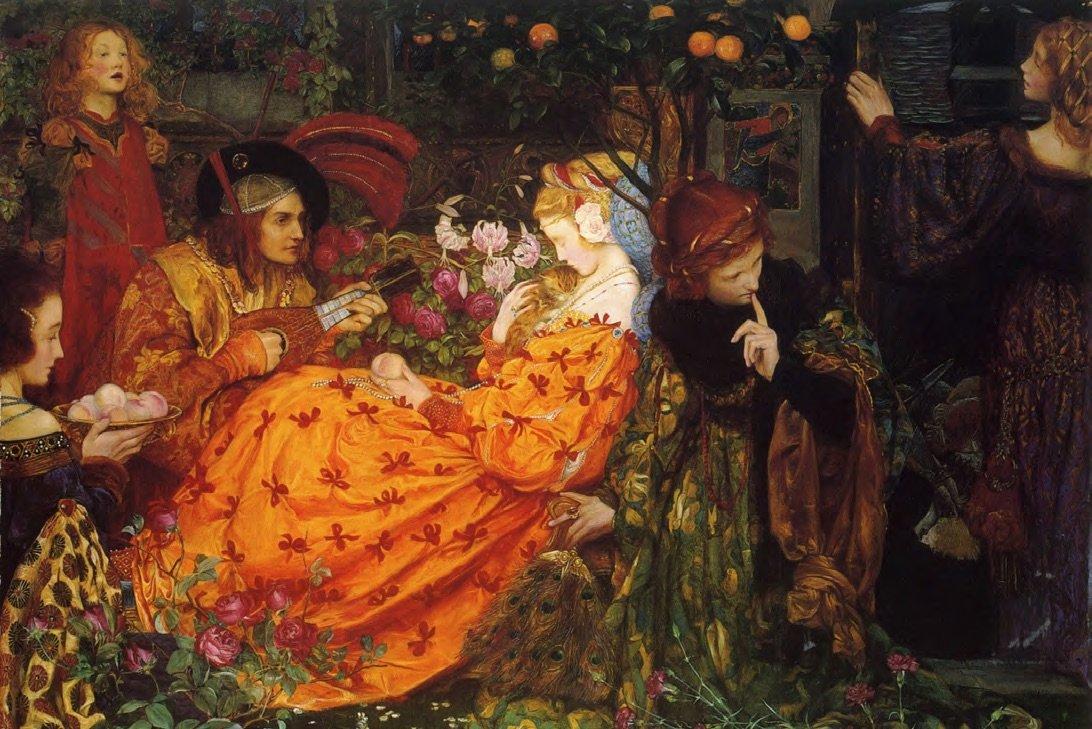
The loss of such champions meant that images of damsels, knights, fairies, and femme fatales fell from favor and were replaced with new harsh realism or abstract tastes. This trend continued as the different priorities and concerns of modernism, such as speed, mass political movements, and convenience, replaced the old ones. After the calamity of World War II ravaged Britain’s urban landscape, its cities were filled with blitzed Victorian houses. It was believed that the period’s ethos needed to be cleared along with the houses in order for the country to recover and find its way in a changed world. Not only that, but many paintings by such artists as Joanna Boyce Wells were destroyed in the bombings. A general feeling of “out with the old, in with the new” meant that much that was Victorian, including its artistic achievements, was again rejected by critics, historians, and the public alike.
Victorianism began to creep back into favor during the revivals of the 1960s. Those who sought to bring Pre-Raphaelitism back to the narrative of British art brought forward the movement’s male artists, waving Millais’s Ophelia or Rossetti’s pouty-lipped women as proof of beauty. In that way, the women who had forged artistic careers ended up being known only for their faces rather than their canvases, and a taste for biographical scandal portrayed women like Siddal as lovelorn groupies rather than artists and poets.
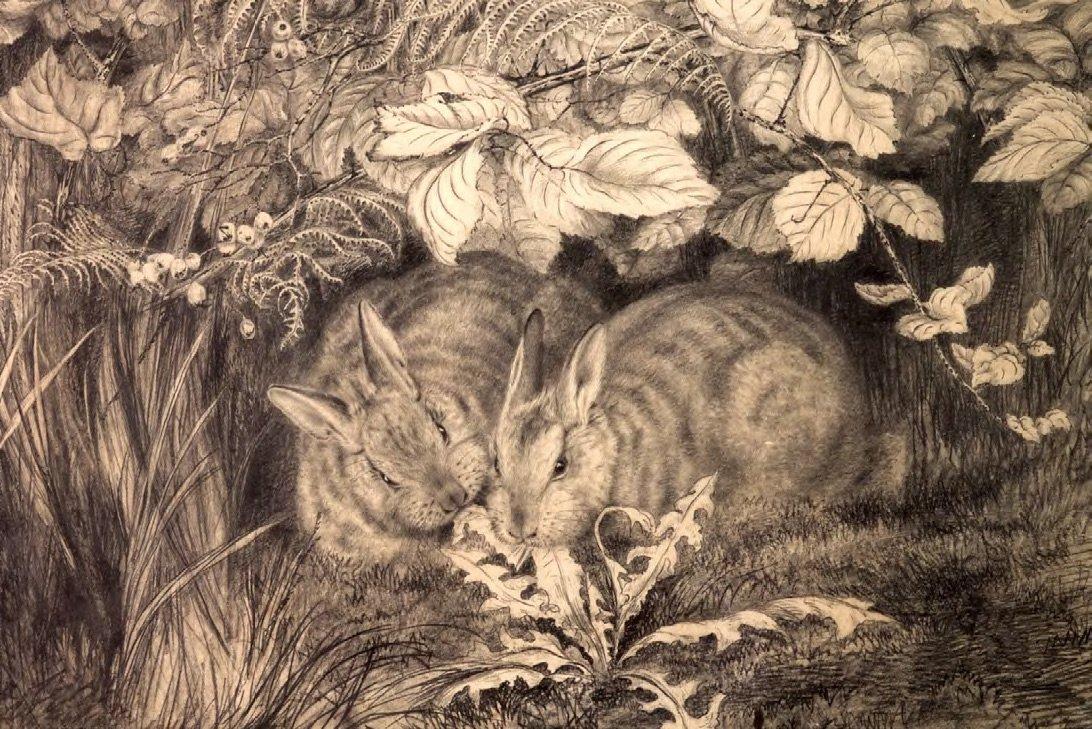
The idea that Pre-Raphaelitism consisted only of men seemed to be set in stone. Mid-20th century artists such as Noel Laura Nesbit and Elfreda Gertrude Beaumont were never joined to the movement, despite both producing paintings that echoed its sentiment and style. Annie Ovenden produced a contemporary Ophelia every bit as striking and moving as Millais’s. She, Jann Haworth, and Anne Arnold all reached out to nature to inspire them, creating works that resonate with the same inspiration that drove the Pre-Raphaelites from 1848.
Only recently has women’s contribution to not only the birth of Pre-Raphaelitism but also to its long and creative life begun to be fully appreciated. Even now, they are often separated into different galleries or even exhibitions, as with the National Portrait Gallery’s 2019 show Pre-Raphaelite Sisters. But slowly the female artists are finding substantial representation, as demonstrated by the many women whose work is featured in the Victorian Radicals exhibition currently touring America. There is hope yet that the talented women who contributed to what we understand as Pre-Raphaelite will themselves be appreciated as wholeheartedly as their brothers, lovers, and male colleagues. Maybe in the not too distant future, when we think of a Pre-Raphaelite woman, she will have a pen or brush in her hand rather than a mournful lily.
